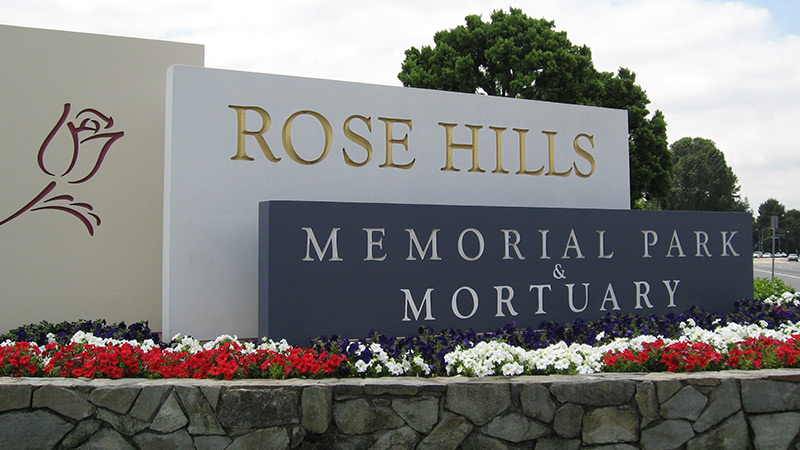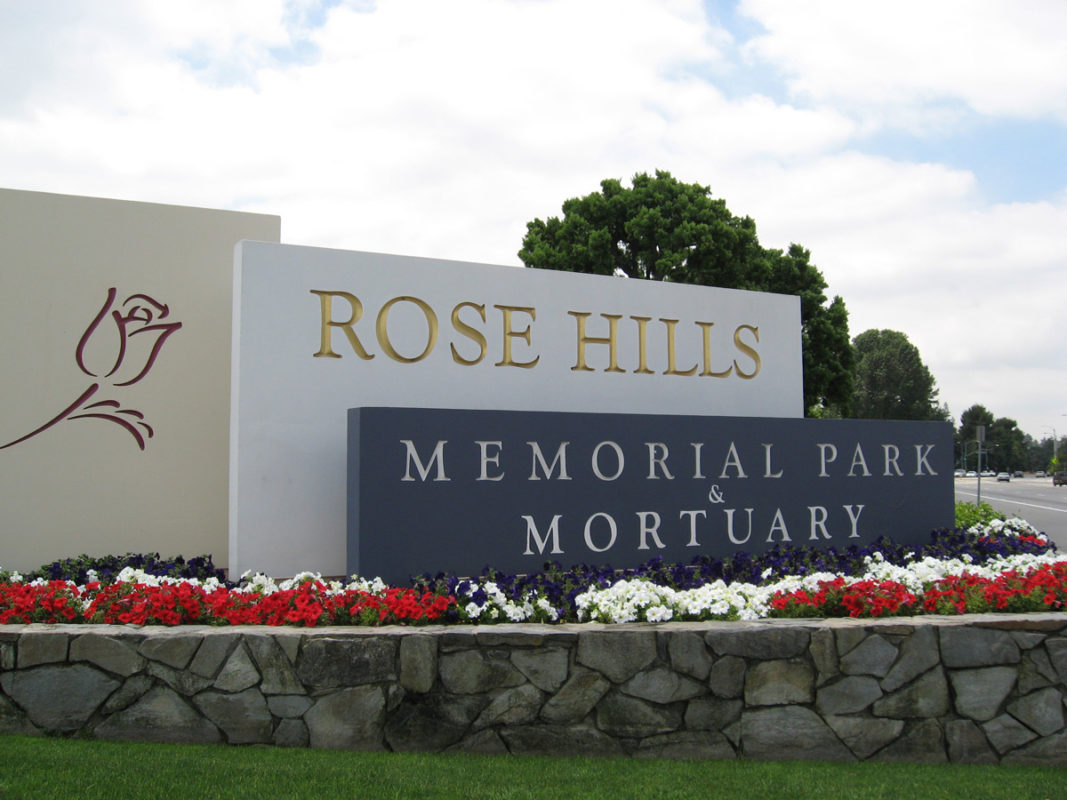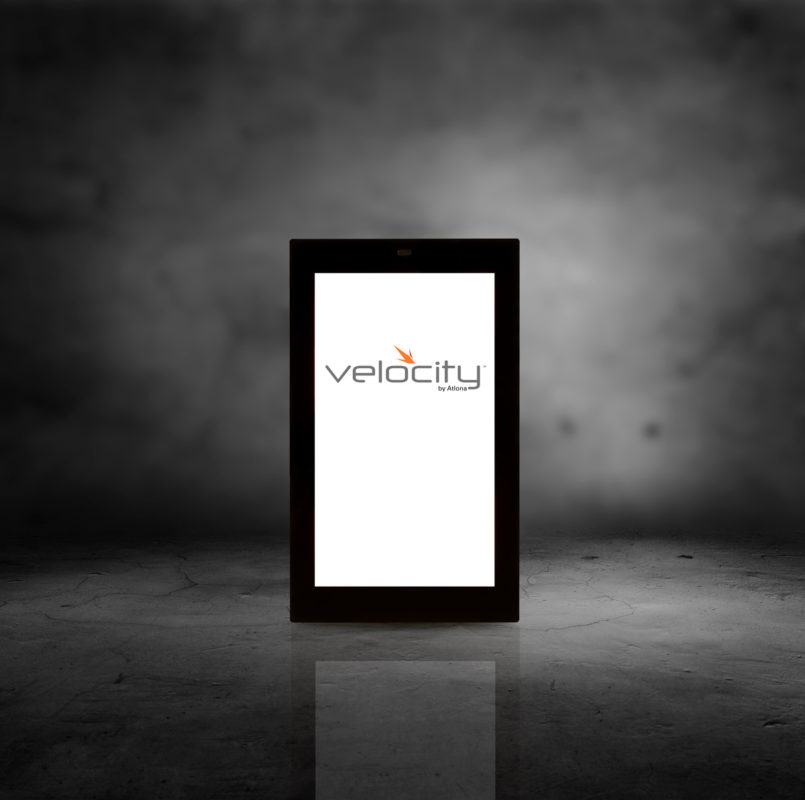Case Study: Rose Hills Memorial Park
Rose Hills Memorial Park Adds AV To Comfort Mourners
Download the Case Study PDFOriginally established in 1914, Rose Hills Memorial Park in Whittier, California covers more than 1400 acres and claims to be the biggest cemetery in North America. The site is to a variety of facilities, including four chapels and a hall of remembrance.
One of Rose Hill’s most important buildings, The Mortuary, was built in 1956 and features 30 specially-designed visitation rooms across three floors. These visitation rooms, which vary in size, accommodate the different needs of funerals and related gatherings, with the largest accommodating 80 people.
A recent renovation program tasked Long Beach-based Digital Installers, Inc. with adding a contemporary AV system to 23 of the 30 visitation rooms, anchored by an Atlona Velocity IP-based AV control platform to simplify the management of AV components and signals.
“There wasn’t much of an AV presence at all before, and with 700 employees the management was looking for a simple AV system that their employees could use to select and control sources without difficulty,” says Randall Shelley, sales executive, Digital Installers, Inc. “The system had to be very simple for Rose Hill staff to use, without any need for training.”
While there was audio in some of the rooms prior, there was no way to play video content. Specifically, the management at Rose Hills Memorial Park wanted to install TV screens in each room, which would allow funeral parties to play a video or a PowerPoint® presentation about the deceased.
“There needed to be local control in all the visitation rooms, yet all the content plays out from a central rack room that is distant from many of the visitation rooms,” said Shelley. “The system allows the technicians to queue and prepare the presentations from the DVD player or USB stick at the central equipment rack, and then walk to the corresponding visitation room. The presentations are then touchscreen-initiated in the visitation rooms. We therefore wanted a control system that was easy for any employee to use.”
“The response from the Rose Hills staff has been very positive, as they clearly expected a more complicated learning curve.”
– Randall Shelley, sales executive, Digital Installers, Inc.
Facility-Wide Control Over IP
The Velocity architecture includes a software-based control processor, the Velocity Control Gateway, on each of the three floors. Each of the 23 visitation rooms include an Atlona VTP-550 5.5-inch touch panel, and a wall plate for switching between two video inputs; the corresponding DVD players are located in the rack room on the same floor. A pair of separate loudspeakers were added to accommodate the more powerful audio needs of larger visitation rooms.
The Velocity Control Gateway resides alongside other AV systems, with networked control signals moving to all Atlona and third-party devices. Several chapel rooms are also spread across the three floors. Velocity touch panels were added in these rooms for organists, allowing them to pause the presentation, play music, and then cue the next part of the video.
“All you see on the Velocity touch panel in each room is two inputs: one for the DVD player and one for the wall plate,” said Shelley. “When you press the DVD input on the touch panel, a virtual remote control pops up on the screen so that you can control it while looking at the monitor. The audio is also set there and is just as simple, with max and medium volume buttons.
“The most important thing is that you don’t need to know how to operate the system, as all options are clearly labeled onscreen,” he continued. “It’s completely self-explanatory. The response from the Rose Hills staff has been very positive, as they clearly expected a more complicated learning curve.”
Atlona AT-UHD-SW-5000ED five input auto switchers with HDMI and HDBaseT capability feed displays in each visitation room. “Since the TV screens are not IP-capable, we route Video and IR over HDBaseT via Category cable to a receiver at each display,” said Shelley. “We then use IR for screen control.”
Each floor also has its own rack room housing the systems for the state rooms on that floor. Atlona GAIN-120 power amplifiers with GAIN-NET interfaces support AES67 streams over IP for the larger visitation rooms with loudspeakers, maintaining digital audio through to the loudspeakers.
“Beyond the networking benefits of the GAIN interfaces, the amplifiers are very powerful,” said Shelley. “The loudspeakers have a very broad distribution pattern, so paired together the room is sound in the room is very full, with plenty of volume.”
Back at the equipment racks, employees also have the ability to monitor each service to ensure they start and end on time. The also integrate Atlona SW-51 five-input HDMI switchers for signal distribution and management, along with an additional Velocity touch panel.
“Since each service runs over a certain time, they wanted a way to monitor what was playing in each visitation room on that floor,” says Shelley. “They can see everything that is playing out on that floor from the rack room, queue the content from the rack room, and switch the screen on when they get to the visitation room for the service. This ensures that the content is played at the appropriate time.”
Accelerated Configuration
Beyond client ease of use, Shelley discovered that Velocity’s architecture simplifies configuration across the various spaces.
The Velocity Gateways are integrated into the rack rooms on for each floor. System configuration was straightforward: Shelley entered the IP address of each Velocity Gateway, recalled the Velocity interface, and leveraged its drag-and-drop functionality to add the drivers for the relevant hardware in the visitation rooms. Once set up, the Gateways managed themselves.
“Velocity integrates a software-defined toolset that was helpful in accelerating the setup and configuration process,” he says. “For example, Floor Three is identical to Floor One. I exported the Floor One settings into a JSON file, and imported the floor configuration to the Gateway on Floor Three. Everything was immediately there. All I had to do was edit the names and IP addresses of each device on the network to finish the job. The fact that I could save little macros of all the work I did, and not have to repeat the same task in each room, was an enormous time- and labor-saver.”
Shelley anticipates that the system will be expanded within the Mortuary at some point. “We would simply have run new CAT6a lines and install the hardware,” said Shelley. “The Velocity software would be complete within minutes. Each Gateway also provides access to Velocity control in the cloud, should we ever scale to a point where it makes sense to migrate. In any case, we are absolutely planning to grow the Velocity network to other spaces to create a more unified system throughout.”

“Velocity integrates a software-Defined toolset that was helpful in accelerating the setup and configuration process”
– Shelley
| PRODUCTS FEATURED | PRODUCTS FEATURED |
| Model | Description |
| AT-GAIN-120 | The Atlona Gain™ 120 (AT-GAIN-120) is a compact power amplifier designed for low or high impedance applications. |
| AT-GAIN-NET | The Atlona AT-GAIN-NET is a networked audio interface card for the Gain 120 (AT-GAIN-120) power amplifier. |
| AT-UHD-SW-5000ED | The AT-UHD-SW-5000ED is part of the Atlona SW Series of compact AV switchers, ideal for a wide range of commercial and residential applications. |
| AT-UHD-SW-51 | The AT-UHD-SW-51 is part of the Atlona SW Series of compact AV switchers, ideal for a wide range of commercial and residential applications. |
| VTP-550 | The Atlona VTP-550 is a 5.5″ touch panel for the Atlona Velocity Control System. |









